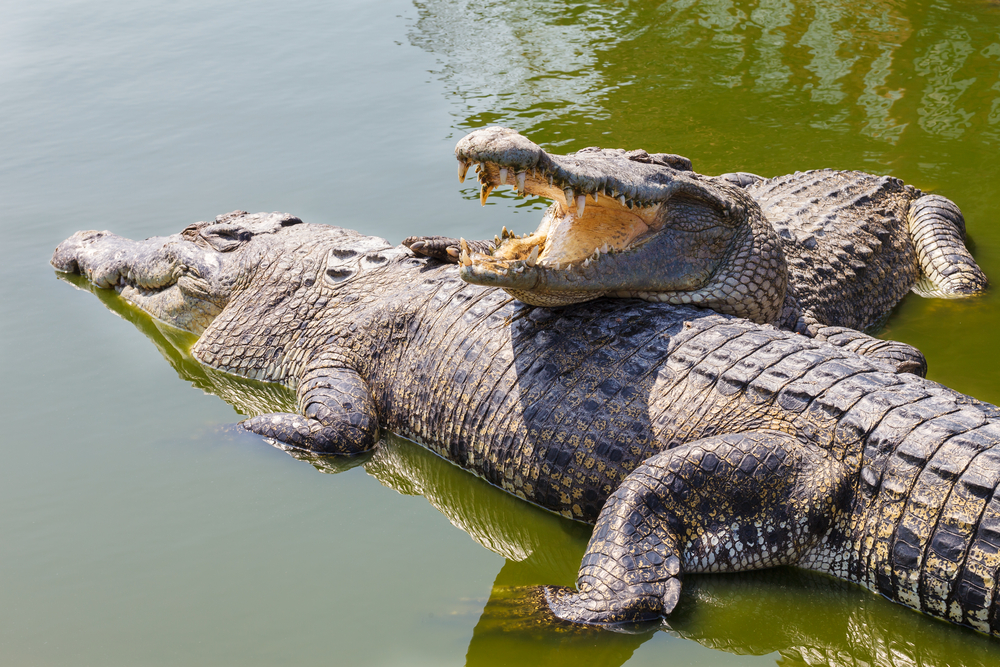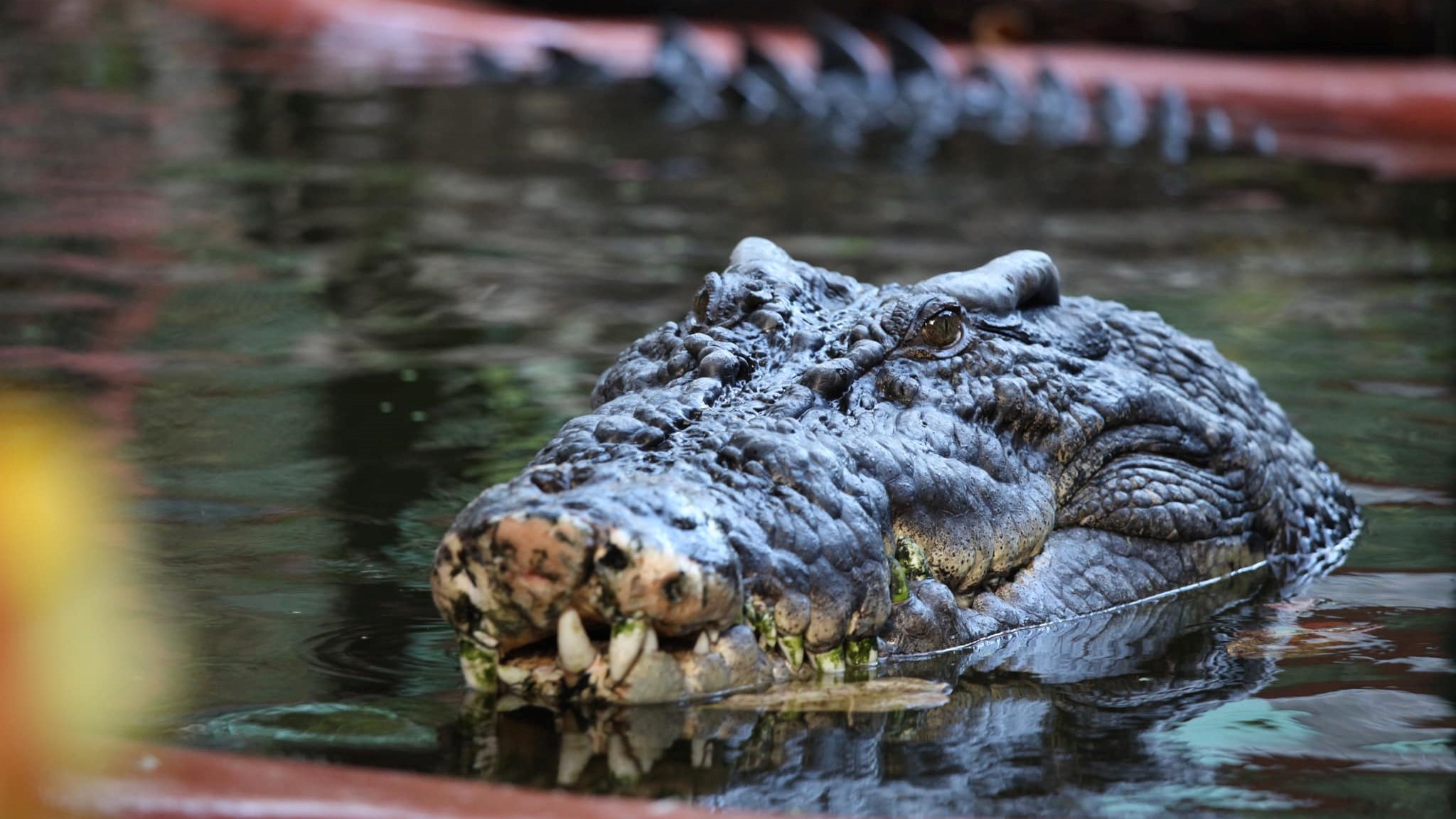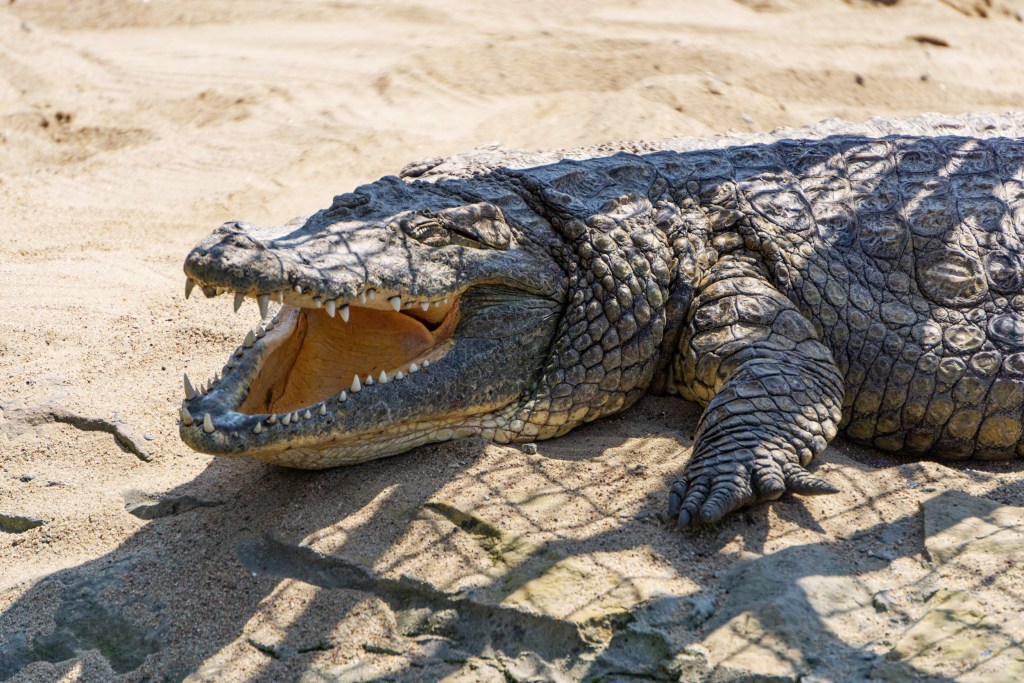Facts about crocodiles: Crocodiles, often referred to as “living fossils,” have fascinated and frightened humans for centuries. These ancient reptiles are powerful predators, thriving in some of the harshest environments on Earth. While many of us know crocodiles as apex predators with fearsome jaws, there’s so much more to these incredible creatures than meets the eye. Let’s delve deeper into this topic “Facts About Crocodiles”.

In this blog, we’ll uncover fascinating facts about crocodiles that you might not know, from their biology to their unique behaviours. And if you’re lucky enough to visit the Sundarbans, where crocodiles are an integral part of the ecosystem, Royal Sundarban Tourism can help you witness these incredible creatures up close!
1. Crocodiles Are Ancient Survivors
Crocodiles have been around for over 200 million years, surviving mass extinctions that wiped out the dinosaurs. They are considered one of nature’s most successful evolutionary designs, adapting to diverse environments across continents. We can explore this further “Facts About Crocodiles”.
Fact You Might Not Know:
Crocodiles are older than dinosaurs and have changed very little in their physical appearance over millions of years. We can explore this further “Facts About Crocodiles”.

2. They Can Go Months Without Eating
Crocodiles are efficient eaters. They store fat in their tails and can survive for months without food after a large meal. This adaptation allows them to thrive in environments where prey is scarce.
Fact You Might Not Know:
A crocodile can live for up to a year without eating, provided it has stored enough energy.
3. Crocodiles Are Fast—On Land and in Water
Despite their bulky appearance, crocodiles are surprisingly fast. In the water, they use their powerful tails to propel themselves at speeds of up to 15-20 mph. On land, they can sprint up to 10 mph for short distances.
Fact You Might Not Know:
Crocodiles are ambush predators and can launch themselves out of the water with lightning speed to catch prey.
4. Crocodile Mothers Are Surprisingly Caring
While crocodiles are often seen as ruthless predators, they are devoted mothers. Female crocodiles guard their nests fiercely and help their hatchlings reach the water after they emerge.
Fact You Might Not Know:
Crocodiles “talk” to their unborn young. Hatchlings make chirping sounds inside the eggs to communicate with their mother and siblings!
5. Their Jaws Are Both Strong and Weak
Crocodiles have one of the strongest bites in the animal kingdom, with a force of up to 3,700 pounds per square inch (psi)—stronger than that of a great white shark. However, their jaw-opening muscles are surprisingly weak and can be held shut with just a few layers of duct tape. Feel free to share more details so we can discuss further “Facts About Crocodiles”.

Fact You Might Not Know:
Despite their powerful bite, a crocodile’s jaw-opening muscles are so weak that a human hand can hold them closed.
6. Crocodiles Have a “Third Eyelid”
Crocodiles have a special transparent eyelid called a nictitating membrane that protects their eyes while underwater. This feature allows them to see clearly in murky water.
Fact You Might Not Know:
Crocodiles can close their eyes underwater without compromising their vision, giving them a hunting advantage.
7. They Are Excellent Hunters—Even at Night
Crocodiles are nocturnal predators. Their eyes have a specialized layer called the tapetum lucidum, which reflects light and enhances their night vision. This adaptation makes them highly effective hunters in low-light conditions. We could talk more about this “Facts About Crocodiles”.
Fact You Might Not Know:
If you shine a flashlight on a crocodile at night, its eyes will glow red due to the tapetum lucidum.

8. Crocodiles Swallow Stones for Better Digestion
Crocodiles intentionally swallow stones, a behaviour called gastrolith ingestion. These stones help them grind up food in their stomachs and act as ballast to improve buoyancy control.
Fact You Might Not Know:
Some crocodiles carry several pounds of stones in their stomachs!
9. Crocodiles Can Hold Their Breath for Hours
Crocodiles are masters of underwater ambushes, able to hold their breath for up to two hours while waiting for prey. They achieve this by slowing their heart rate to just 2-3 beats per minute.
Fact You Might Not Know:
Crocodiles conserve oxygen by redirecting blood flow away from unnecessary body parts while submerged.
10. They Communicate Using Vocalizations
Crocodiles are among the most vocal reptiles. They use a range of sounds, from roars and hisses to grunts and bellows, to communicate with each other.
Fact You Might Not Know:
Male crocodiles produce a deep rumbling sound during mating season that can cause the water around them to vibrate.
Crocodiles in the Sundarbans
The Sundarbans National Park is home to the estuarine or saltwater crocodile, the largest reptile in the world. These crocodiles thrive in the delta’s mangrove swamps, where they play a crucial role in maintaining the ecosystem’s balance.
If you’re visiting the Sundarbans, spotting a crocodile in its natural habitat is a thrilling experience. Safely explore these incredible reptiles with Royal Sundarban Tourism, your trusted guide to the mangroves.
Why Choose Royal Sundarban Tourism for Your Crocodile Safari?
If you’re fascinated by crocodiles and want to witness them in the wild, Royal Sundarban Tourism offers expertly curated tours designed to give you a safe and unforgettable experience.
1. Guided Safaris
Experience crocodiles in their natural environment with the help of experienced naturalists who ensure both safety and fascinating insights.
2. All-Inclusive Packages
Royal Sundarban Tourism takes care of everything, from comfortable lodging and local cuisine to boat safaris and transportation.
3. Safety First
The Sundarbans is a wild and challenging environment, but with Royal Sundarban Tourism, you’re in safe hands. Their expert guides and well-maintained boats prioritize your safety.
Also, you can Book the Sundarban Tour At Maity Tourism and Sundarban Leisure Tourism Powered By Argusdna,
Contact Royal Sundarban Tourism Today:
- Website: Royal Sundarban Tourism
- Phone: +91 7439965413 / +91 8584838109
- Payment Options: GPay and PhonePe at 9804049535
- Email: info@royalsundarbantourism.com
- Address: Village: Tiger More, Gosaba, Pakhiralay, District- 24 Parganas South, West Bengal 743370
Plan Your Crocodile Safari Today! And Know Facts about crocodiles
Crocodiles are among nature’s most fascinating creatures, and there’s no better place to see them than the Sundarbans. Witness these incredible reptiles in their natural habitat while exploring the world’s largest delta with Royal Sundarban Tourism.

